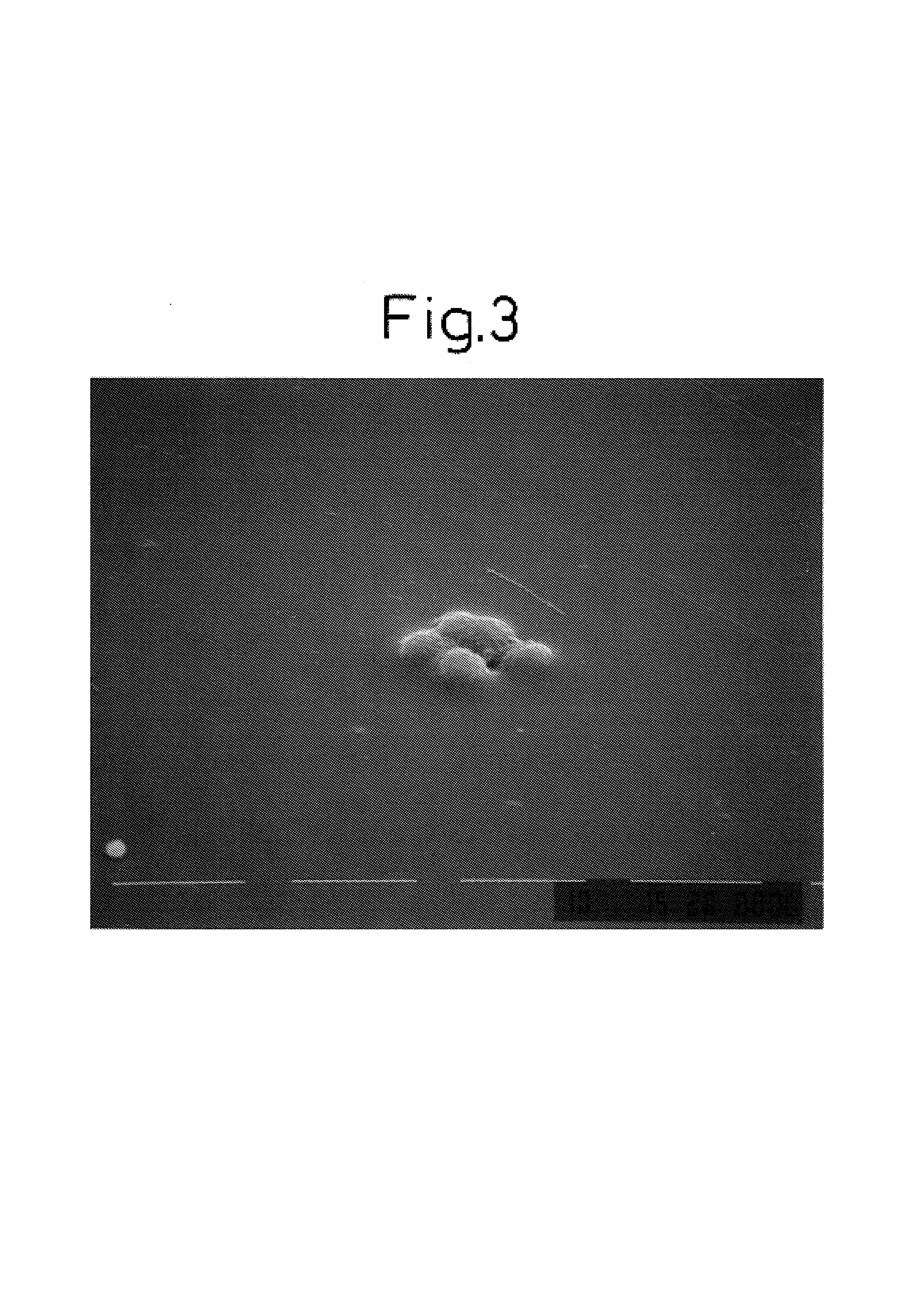Easily slidable polyimide film and substrate employing it
a polyimide film, easy-to-slid technology, applied in the field of sliding polyimide films, can solve the problems of reducing the overall heat resistance of the flexible substrate, creasing or sticking to the roll, and affecting the smoothness of the surface, so as to improve the sliding property, hinder the formation of fine pitch, and improve the sliding property
- Summary
- Abstract
- Description
- Claims
- Application Information
AI Technical Summary
Benefits of technology
Problems solved by technology
Method used
Image
Examples
reference example 1
[0061]Preparation of Particulate Polyimide
[0062]A particulate polyimide was prepared by dissolving p-phenylenediamine and pyromellitic dianhydride in N,N′-dimethylacetamide, adding a dispersant (0.5 mass % based on monomer), gradually heating to 160° C. while stirring (40 rpm) under a nitrogen atmosphere, and further stirring for 3 hours after reaching that temperature. The obtained particulate polyimide was analyzed by measuring the particle distribution with a laser diffraction / scattering particle size distribution measuring instrument, which indicated a median size of 0.3 μm and a distribution range of 0.1–1 μm. Upon confirming the particulate polyimide form by SEM observation, the particles were found to be columnar with a short / long axis ratio of 3–6.
example 1
[0063]The particulate polyimide was added to an 18 mass % polyamic acid solution composed mainly of 3,3′,4,4′-biphenyltetracarboxylic dianhydride, 2,3,3′,4′-biphenyltetracarboxylic dianhydride and 1,3-bis(4-aminophenoxy)benzene, at 0.5 mass % based on the monomer concentration, and the mixture was cast onto a stainless steel substrate to a dried film thickness of 25 μm, dried with hot air at 120° C., and peeled from the substrate to obtain a self-supporting film. The self-supporting film was slowly heated from 140° C. to 330° C. in a heating furnace to remove the solvent and accomplish imidization, and the long polyimide film was wound up onto a wind-up roll. The winding property during wind-up was satisfactory. The friction coefficient of the obtained film was also measured. The Tg of the polyimide composed mainly of 3,3′,4,4′-biphenyltetracarboxylic dianhydride, 2,3,3′,4′-biphenyltetracarboxylic dianhydride and 1,3-bis (4-aminophenoxy)benzene was 240° C.
[0064]The results of evalua...
example 2
[0070]An 18 mass % polyamic acid solution composed mainly of 3,3′,4,4′-biphenyltetracarboxylic dianhydride, 2,3,3′,4′-biphenyltetracarboxylic dianhydride and 1,3-bis (4-aminophenoxy)benzene was cast onto a stainless steel substrate to a dried film thickness of 24 μm, and dried with hot air at 120° C. Onto the obtained film there was laminated a 5 mass % polyamic acid solution composed mainly of 3,3′,4,4′-biphenyltetracarboxylic dianhydride, 2,3,3′,4′-biphenyltetracarboxylic dianhydride and 1,3-bis(4-aminophenoxy)benzene, containing particulate polyimide at 2 mass % based on the monomer concentration, to a dried total film thickness of 25 μm, and this was dried with hot air at 120° C. and peeled from the substrate to obtain a self-supporting film.
[0071]The self-supporting film was slowly heated from 140° C. to 330° C. in a heating furnace to remove the solvent and accomplish imidization, and the long polyimide film was wound up onto a wind-up roll. The winding property during wind-up...
PUM
| Property | Measurement | Unit |
|---|---|---|
| size | aaaaa | aaaaa |
| size | aaaaa | aaaaa |
| glass transition temperature | aaaaa | aaaaa |
Abstract
Description
Claims
Application Information
 Login to View More
Login to View More - R&D
- Intellectual Property
- Life Sciences
- Materials
- Tech Scout
- Unparalleled Data Quality
- Higher Quality Content
- 60% Fewer Hallucinations
Browse by: Latest US Patents, China's latest patents, Technical Efficacy Thesaurus, Application Domain, Technology Topic, Popular Technical Reports.
© 2025 PatSnap. All rights reserved.Legal|Privacy policy|Modern Slavery Act Transparency Statement|Sitemap|About US| Contact US: help@patsnap.com


